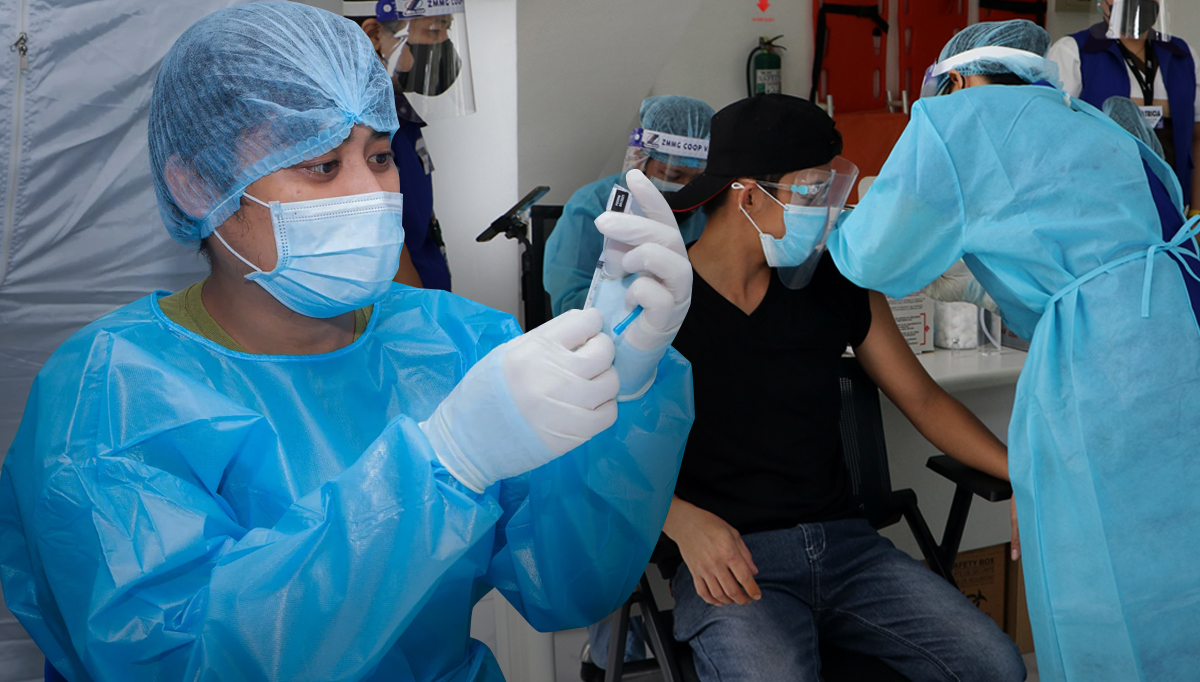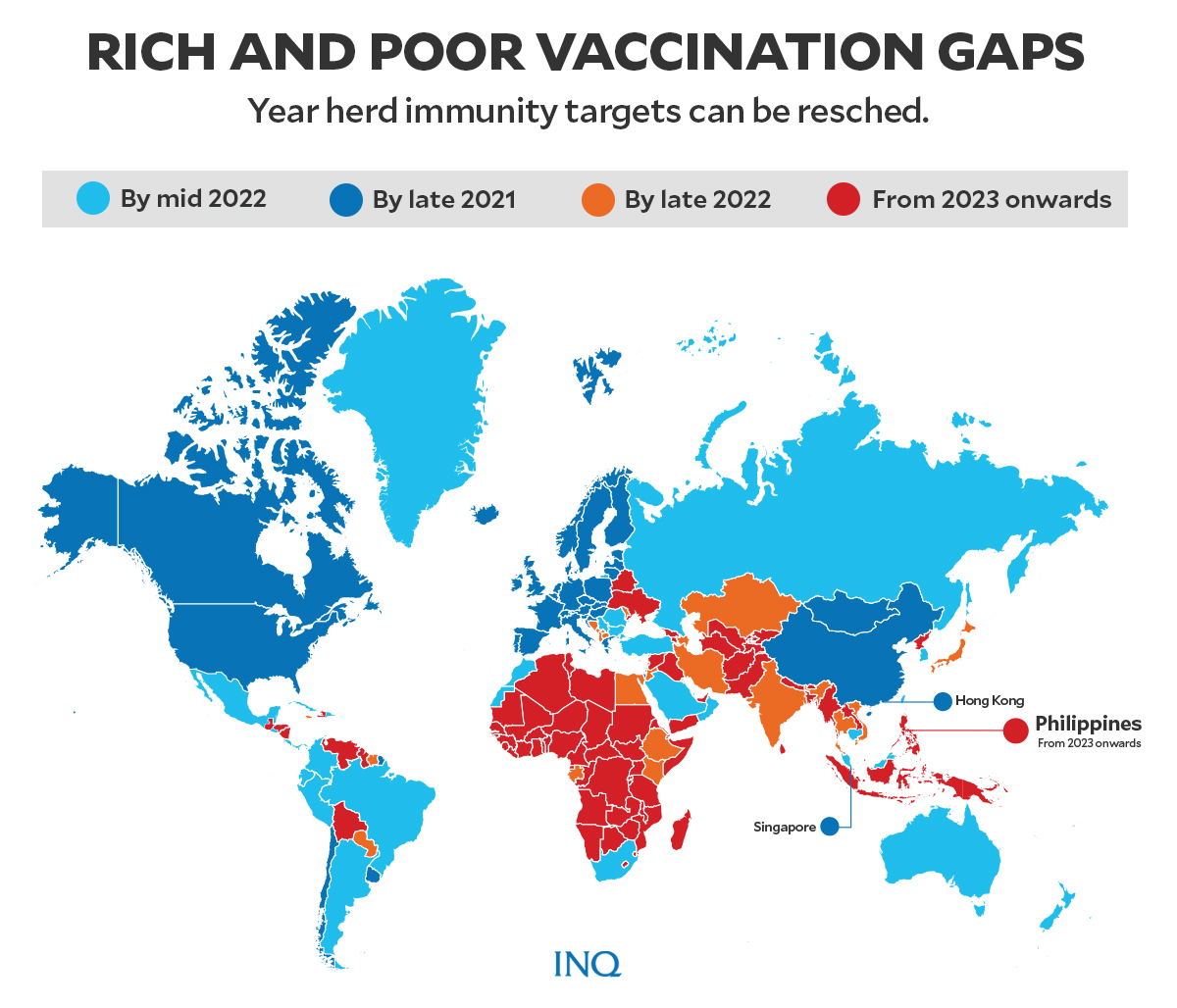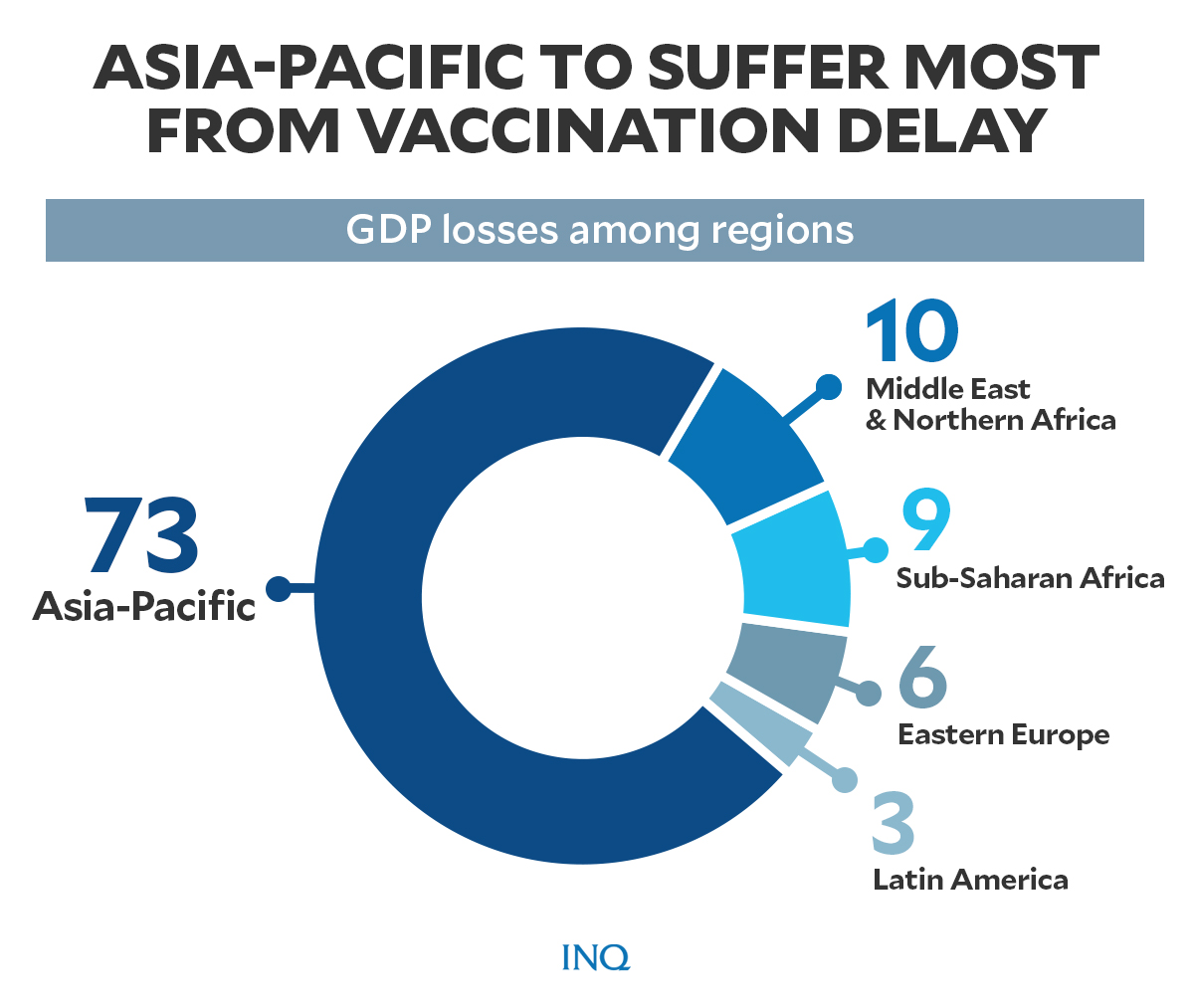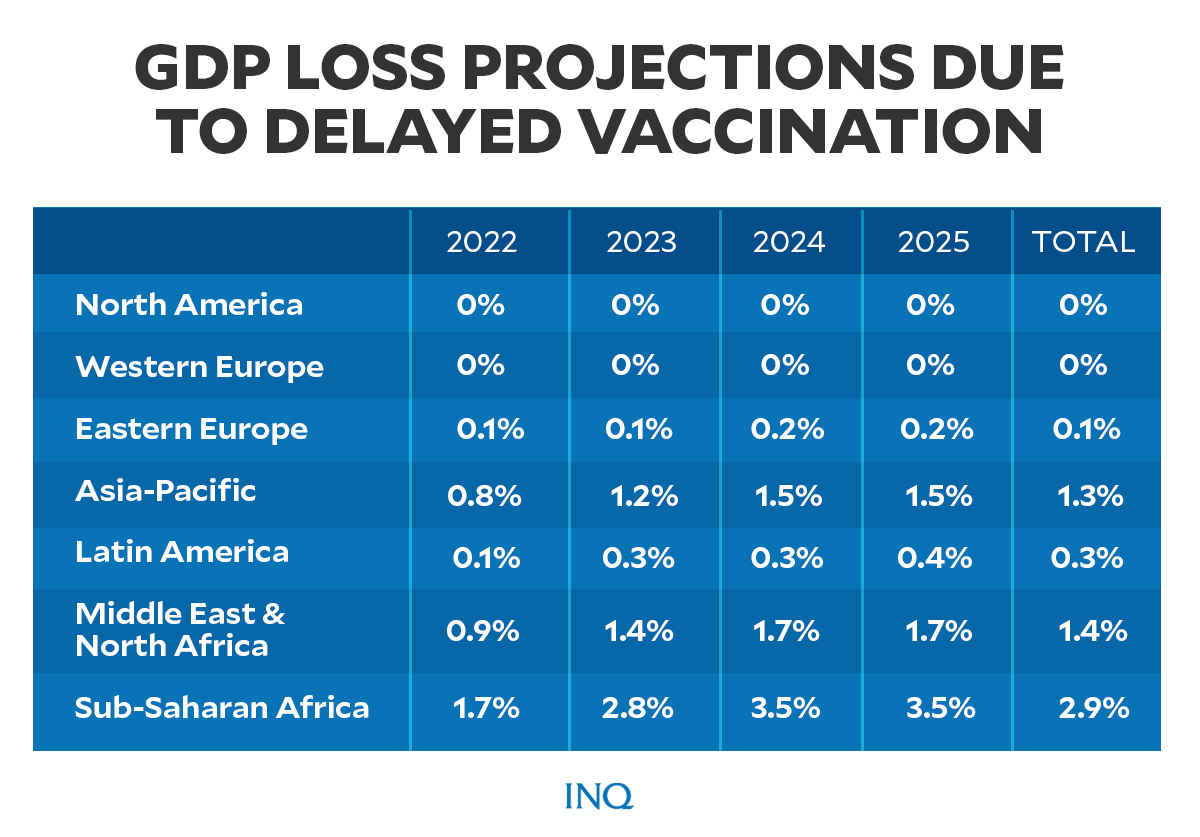The cost of delayed vaccination

Vaccines are administered at a vaccination site in Metro Manila. FILE PHOTO
MANILA, Philippines—The war on COVID-19 is being fought with the same urgency by countries across the globe, but the battles are yielding different results that depend on the level of each country’s economic development.
One group belonging to developing nations, including the Philippines, was projected to reach herd immunity in 2023 yet, far behind the group of countries that are considered to be developed.
This was among what the Economist Intelligence Unit (EIU), a leading business intelligence company, showed in a recent report on the delay in vaccination caused by inequality among nations and its cost on their economies.

Graphic by Ed Lustan
Countries in developed regions are likely to meet herd immunity targets way ahead of those in developing areas, EIU said in its report.
The Philippines, according to the new EUI forecast, will be able to vaccinate bulk of its population from 2023 onwards.
Article continues after this advertisementLast January, EIU Asia released a similar forecast, estimating that the Philippines will finish mass vaccination of 60 percent of its population by the fourth quarter of 2023.
Article continues after this advertisementREAD: Galvez: ‘Best-case scenario’ for PH to vaccinate 60-70% of population by Q4
Vaccine inequity
Vaccine inequity has become more evident over a year since the COVID-19 pandemic began in China as higher-income countries continued to see progress in their vaccination campaigns.
According to EIU’s Q3 Global Forecast report, “vaccination campaigns are in full swing in advanced economies.”

Graphic by Ed Lustan
Data collected by EIU showed that as of late August this year, at least 60 percent of the population in higher-income countries had already received at least one dose of vaccine.
Among poorer populations in lower-income countries, the number was just 1 percent.

Graphic by Ed Lustan
“To put this in context, rich countries have administered 100 times as many vaccines as have poorer countries,” the EIU report said.
The research and analyst division of the US newspaper The Economist cited several factors currently fueling the global vaccine inequity.
Among these were:
- Shortage of raw materials.
- Limited production capacities, especially in developing countries that rely on supplies from India.
- The ability to afford vaccines, “especially if [the countries] are already struggling to provide crucial basic services such as clean water.”
- Logistics including issues on shipping and having adequate transport infrastructure and cold chains for the vaccines.
- Limited health care personnel to administer vaccines.
- Vaccine hesitancy among the population.
Delayed vaccination, huge costs
The slow vaccine rollout for all countries that will fail to vaccinate less than 60 percent of their population will come at a huge cost.
According to the model developed by EIU, the global cost of not vaccinating 60 percent of populations by mid-2022 will amount to a total of $2.3 trillion in GDP losses between 2022 and 2025.
“The biggest share of the money lost will come out of Asian countries’ GDPs, which are expected to bear almost three quarters of the total loss,” said Katharina Buchholz, of data consumer company Statista.

Graphic by Ed Lustan
“The share of other regions was significantly smaller, while Western Europe and North America were not included. Both regions are expected to have vaccinated 60 percent of their adult populations before the cut-off date,” she added.
Asia to Shoulder Cost of Delayed Vaccinations
Statista, citing data from Our World in Data, had reported on the “sluggish” rate of vaccination in Asia.
READ: COVID-19 vaccination ‘progressed sluggishly’ in Asia, says data firm
This is despite having China and India—both of which have developed their own coronavirus vaccines.
Developed nations in Asia, like Japan and emerging powerhouse Indonesia, might also bear the brunt of economic losses brought by delayed vaccinations in the region.
Buchholz said in Latin America, some countries are expected to also suffer major delays in vaccination which could extend beyond middle of 2022. These countries are Bolivia, Guatemala and Paraguay. This would bring the region’s GDP lost to just 3 percent, Buchholz said.
“African and Middle Eastern timelines are seriously lagging, but because of the economic weakness of the African continent, only 19 percent of losses are expected to hit regional GDPs there,” she added.
Extended timeline
Delayed vaccination will not only have an economic impact, but will also further prolong the different herd immunity timelines among the different regions and countries around the globe.
According to the map presented by EIU, some countries might take years before they can vaccinate at least 60 percent of their population.
Most emerging countries in Asia, due to slow vaccine rollout, are expected to reach the 60 percent goal by the end of 2022 or 2023. Exceptions are China, Mongolia, South Korea, Cambodia, Singapore, and Malaysia.
The Delta variant, the more aggressive mutation of SARS Cov2—the virus that causes COVID-19—is making a huge impact on herd immunity targets worldwide, according to EIU.
“[T]he global vaccination threshold to achieve herd immunity (whereby a virus disappears for lack of people to infect) now stands at around 90 percent, up from 60 percent to 70 percent previously,” the report read.
“Such a high immunization rate appears unachievable in developed countries (owing to vaccine hesitancy), let alone in developing ones (owing to vaccine inequity),” the EIU added.
Where are we now
Data released on Tuesday, August 31, bared that the government has already administered a total of 33,099,392 doses of vaccines since the vaccination drive started last March 1.
According to the health department, as of August 29, 13,784,681 individuals in the country are now fully vaccinated against COVID-19.
Meanwhile, around 19,314,711 individuals have already had their first dose.
READ: Over 13.7M fully vaccinated against COVID-19 — gov’t data
This was at least 27.59 percent of the country’s goal to administer at least one vaccine dose to a total of 70 million individuals.
READ: Galvez says first dose vaccination of 70M people achievable by November
Amid this vaccine numbers, the Philippines has registered an all-time record of 22,366 new COVID infections on Monday (Aug. 30).
This was the highest daily count ever logged since the pandemic started last year.
This brought the Philippine’s total COVID-19 cases to 1,976,202. Of those,148,594 are active cases, 1,794,278 are recoveries, and 33,330 died.
READ: PH’s top record: 22,366 new COVID-19 cases boosting active infections past 148,000
The Department of Health (DOH) also reported that a huge portion, or 74 percent, of ICU beds across the country were already in use.
At least 72 percent of ward beds and 64 percent of isolation beds nationwide are also occupied.
RELATED STORY: COVID cases sending NCR hospitals to ICU
TSB
For more news about the novel coronavirus click here.
What you need to know about Coronavirus.
For more information on COVID-19, call the DOH Hotline: (02) 86517800 local 1149/1150.
The Inquirer Foundation supports our healthcare frontliners and is still accepting cash donations to be deposited at Banco de Oro (BDO) current account #007960018860 or donate through PayMaya using this link.